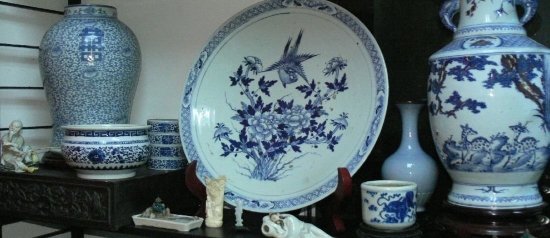Christmas is a magical time especially if like me you have two small children who still believe in Father Christmas.
The Christmas that we celebrate today with its rituals of Christmas trees, decorations, presents and Christmas cards is seeped in history but many of the rituals were only introduced during the 19th century.
Christmas was made official in 325AD when the first Christian Roman Emperor, Constantine the Great introduced Christmas as a feast to be held on 25th December to celebrate the birth of Christ.
But many of the rituals associated with Christmas go back to pagan times such as the use of holly and other ever greens as decorations. These were used by Pagans to celebrate the last night of winter, also known as Yule, the night on which a huge log would be burnt.
It was not, however, until the 19th century that the celebration of Christmas as we know it today evolved, spurred on by the publication in 1820 of Washington Irving’s book The Keeping Of Christmas at Bracebridge Hall and the publication in 1834 of Charles Dickens A Christmas Carol.
Prince Albert introduced the first Christmas tree into England in 1841 from his native Germany where its use dates back to pagan times. Queen Victoria upheld the custom of the Christmas tree after his death, but in her later years took offence to some of the customs associated with Christmas, such as kissing under the mistletoe. This custom goes back to the middle-ages when people would make a Holy bough out of evergreens which would be hung from a beam and would then be blessed by a local priest. Once blessed the bough would be used as a place where any visitor to the house over the Christmas season would be embraced to show that any bad feelings incurred during the year were forgotten. Queen Victoria changed the custom so that for every kiss made under the mistletoe a berry had to be removed and when no berries hung from the mistletoe no kisses were allowed.
The use of Christmas tree decorations was started in Germany in the 16th century when painted wax models fitted with ribbons were sold at markets as souvenirs of the Christmas Fair, these were then placed on trees.
Christmas glass baubles began to be made in Bohemia during the 17th century by default. Many of the workers in the glass blowing factories were employed to make drops for chandeliers but the art of glass blowing is thirsty work and at the end of the week and after a few beers, the glass blowers would hold competitions to see who could blow the largest glass balls. These large balls would be decorated by the wives and sold at Christmas fairs to hang in the home to ward of evil as it was believed that if evil saw its own reflection it would stay away. In England these large balls are known as witches balls and are highly collectable. Many can be seen hanging in antiques shops but unfortunately few can be bought, as a lot of shop assistants still believe that if they sell them they will be selling their luck!
With the introduction of gas into the glass factories in the late 19th century, glass blowing became much easier and the glass could be blown much thinner and into wooden moulds to create shapes. By the 1870s the Bohemia factories were exporting glass balls to England where they were used to decorate the newly introduced Christmas trees, the amount of balls hanging on the tree reflecting the status of the owner.
Amongst the glass baubles, the Christmas tree was lit with candles but these were a huge fire hazard even though many different types of candle holders and clips were invented during the 19th century.
It was not until the late 1880s that the first electrically powered lights for Christmas trees were invented by none other than Edison. Although Germany produced hundreds of attractive figural lights many people still preferred the effect of candles and it was not until after World War II that Britain began to use electricity to light up a tree rather than candles.
The use of artificial decorations in the home was introduced in the 1950s. New machinery meant that tinsel etc could be produced cheaply and this was preferred by the housewife to real evergreens as it did not get trampled into the carpet.
Christmas is not Christmas without sending and receiving Christmas cards, yet the first Christmas card was not introduced until 1840. Sir Henry Cole ‘invented’ the Christmas card and asked his friend, the artist John Callcott Horsley, to design it for him.
The idea for the Christmas card was born because Sir Henry was fed up with having to visit friends with his visiting cards and decided that sending a printed greetings card to everyone would stop him having to visit them all. How right he was!
The first Christmas card went on sale in 1843 and was also designed by Horsley with a scene showing a family raising their glasses in a toast to Christmas. Unfortunately the card caused offence to Puritans, who felt that the scene was inappropriate to the birth of Christ, but the run of 1,000 cards at the high price of one shilling was soon sold out and the Christmas card became an important part of Christmas.
Early Christmas card scenes were rarely decorated with Christmassy themes and it was not until the late 19th century that the image of Father Christmas was introduced to a Christmas card.
Finally as you sit down at your Christmas table which, no doubt, will be bedecked with wonderful goodies and Christmas crackers, raise a toast to Tom Smith, the inventor of the cracker.
Tom Smith was a 19th century London sweet and cake manufacturer who whilst on a trip to Paris discovered the bonbon, a sugar coated almond wrapped in tissue paper. Smith introduced the bonbon to London where it became very popular especially during Christmas.
To increase sales he hit upon the idea of hiding printed mottoes within the tissue and to wrap the whole within a casing that would pop when the wrapping was broken. After much research Tom Smith perfected the cracker so that the right amount of pop was produced and the cracker was born. The cracker was an immediate hit and its popularity has survived to this day.



